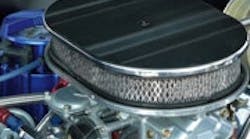I'm an avid runner, and I've always taken good care of my running motor, my legs, or so I thought. I stretch before and after every running session and perform different exercises to help strengthen my leg muscles. For the past two months, I've traded my running routine for a group cardio exercise, and I've been so entertained with this new workout plan that I've put aside my running schedule for good. I signed up for various 5K runs this year, and my first race was just a few days back. I didn't think I needed any training—after all, I've kept up with my cardio.
Boy, was I wrong! Not long after hitting the two-mile mark, my legs gave out. I felt like the belt connecting the gears to my legs busted. I couldn't stop running, but I couldn't control my own speed or the direction my legs were taking my body. I was suffering from total motion control failure.
While I ice my quads and avoid walking of any kind, I'm reflecting on my body's lack of motion control during the race. I also wonder how industrial motion control has changed throughout time. We have some of the answers to this question in our article, "Motion Control: The Past 10 Years." The article reviews the changes that have taken place over the past decade with drives, motors and motion controllers. Read this article at www.ControlDesign.com/motion10 and learn more.
We also surveyed the motion control industry a few years back and found that machine builders were looking to simplify their products with new hardware, software and standalone devices. Visit www.ControlDesign.com/motion2004 to read the article, "Spotlight on Motion Control Devices" and see these findings.
I have to be honest; I know that if I had trained for this past race, I would have been more efficient. In the industrial world, machine efficiency is very important, and the best way to accomplish this is to start with an efficient industrial motor design. Executive Editor Jim Montague wrote recently about new assembly methods, better materials, magnets and interaction with related hardware in his article, "Motor Designs Get Moving." Visit www.ControlDesign.com/motordesign to read how better industrial motor designs rev up new efficiencies in motors.
If you are a controls engineer in need of a variety of information on motion control elements, including drives, motors, servos and steppers, motion software, motion controllers and more, you should visit our Motion Control Resource Center online. Log on to www.ControlDesign.com/motioncontrol and browse our online resources today.
Any motor, industrial or not, should be ready to run under any circumstances. Don't be like me. Perform routine maintenance checkups, learn about new advances to your machine components, and always do run tests before pushing your motor into a job. You never know when the motor will break down. It could happen when you least expect it.




